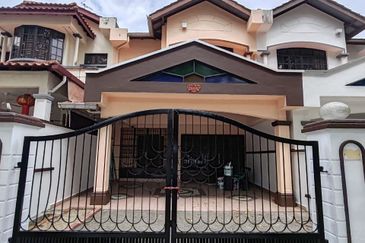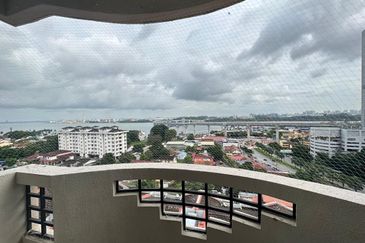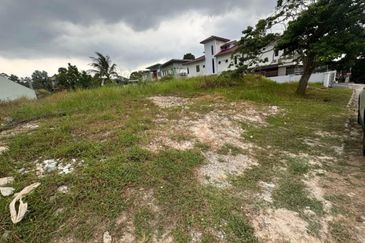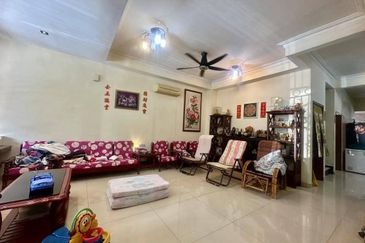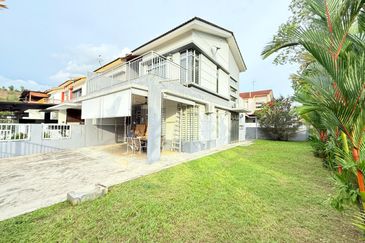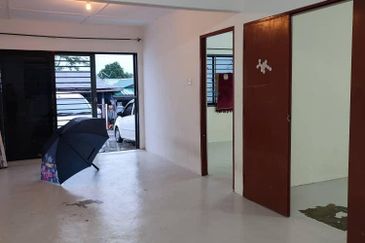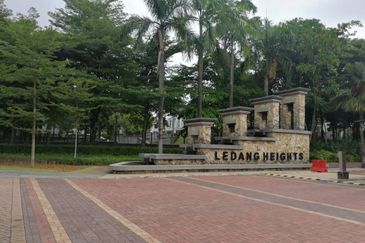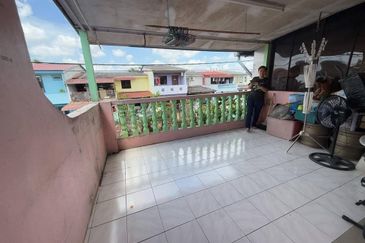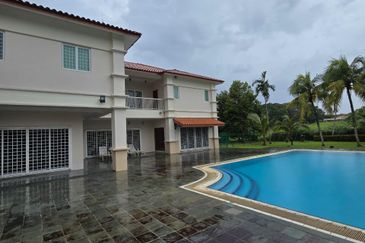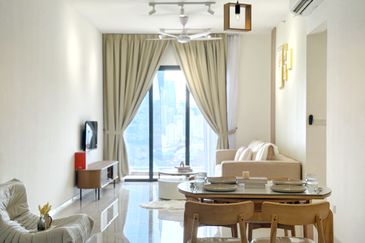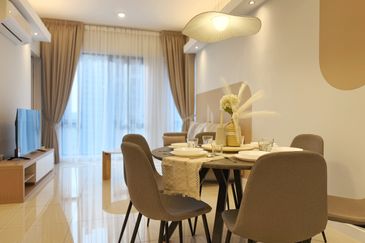
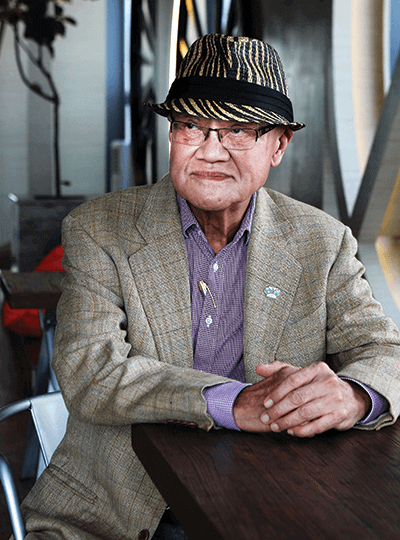
Datuk Alan Tong needs no introduction in the Malaysian property industry. In his more than 50 years in the industry, he has received numerous awards and recognition for his achievements and contributions. These include Property Man of the Year at the Fiabci (The International Real Estate Federation) Malaysia Property Awards in 2010 and being the first Malaysian to be elected Fiabci world president, in 2005/06. During his term, he helped increase Fiabci Malaysia’s international membership fivefold in less than a year, giving its members access to a greater global network. Tong, group chairman of Bukit Kiara Properties Sdn Bhd, served as a judge for The Edge Malaysia Top Property Developers’ Awards from its establishment in 2003, before retiring in 2014.
He started off as a small property developer before venturing into politics for 12 years from 1974. In the 1990s, he expanded his property development activities and Tong became known as the “KL Condo King” for building one of the first condominiums in the country — OG Heights in Old Klang Road, Kuala Lumpur.
One of Tong’s greatest legacies in the industry would be the development of the upmarket condominium enclave of Mont’Kiara in Kuala Lumpur. As the founder of Sunrise Sdn Bhd which eventually became a listed company known as Sunrise Bhd, he was the first to begin the transformation of Mont’Kiara from a rubber estate into what is now a bustling, much sought-after international enclave.
Tong is also known as the man who “saved” the international Fiabci Prix d’Excellence Awards when it almost had to cease at the end of a large sponsorship. He took over the operation of the awards in Malaysia and even used his own money to fund the global property awards so it could continue.
For his contributions to the industry both here and abroad, Tong receives the inaugural The Edge Malaysia Lifetime Property Achievement Award. This award recognises an individual who has contributed significantly to the property industry through the years, not limited to within his/her own company. The individual should also have played a major role (or roles) in raising the image of the industry in Malaysia and beyond.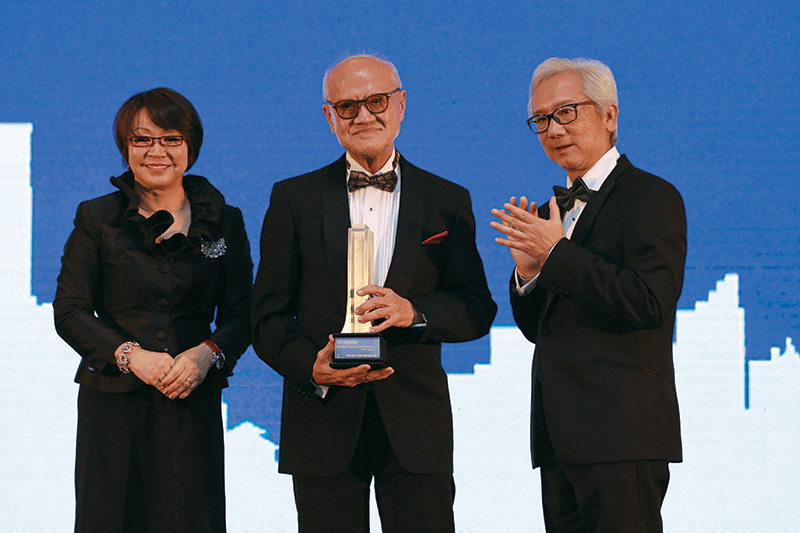
Tong appears energetic and in high spirits, having just celebrated his 80th birthday. “I’m not sure why I am getting this award,” he smiles. “When I was first informed, I was very shocked as I never expected this. Terribly overwhelmed! I am very, very humbled by this award,” he tells The Edge.
Tong mentions “fate” more than a few times when speaking of his family and his experience in the industry. “Somebody up there has been very kind to me.”
During the interview at Bukit Kiara Properties’ Verve Suites KL South in Old Klang Road, Kuala Lumpur, Tong recounts the steps of his journey in the property industry.
The Edge: Can you share with us your earliest memory of your involvement in the property industry?
Tong: I went to Sydney to study architecture. There was no such thing as student counsellors then. I heard about architecture and it sounded very romantic to me so I took the course. To my horror, I discovered that the main focus was design. My standard of design is something I am not proud of. My university days were a huge challenge but I managed to pass. After three years, there was a six-month practical training period and I took the opportunity to return to Malaysia. My mother, just like any parent, was anxious and asked me how was I doing at university. I told her my problem and she took me to a few temples and prayed for me.
Then, I went back to university and for the first time, to my surprise, I got a merit for my design assignment! Before that, I only got passes and credits. I was very pleased and was thankful to my mother. After I graduated, I tried to get a job with a big architectural firm but when they looked at my work from university, I knew they were not impressed. I did not hear from them at all. Then I went to meet Eric Taylor, the head of the the KL Municipal Architect’s Department (Kuala Lumpur City Hall), and was told they did not have the budget to hire anyone. But two days later, I received a telegram (there were no handphones then) asking me to see them as soon as possible. I was living in Klang and rushed to Kuala Lumpur the very next day.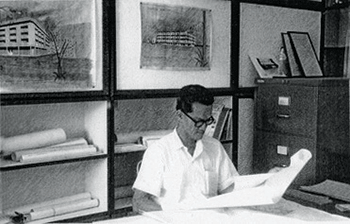
They asked if I would consider taking a temporary job and I said ‘sure!’ I got a three-year contract and in 1964, when my contract expired, I was told again that there was no budget to continue my contract. I was left in the lurch again.
I then started my own architectural office (Akitek Barat). This went on for about four years, and my clients came to me for low-cost homes. It was a one-man show but it was enough to keep me alive. I learnt a lot and in 1968, I thought I should develop properties myself, and that’s when I formed Sunrise Sdn Bhd. I roped in some of my siblings and relatives to invest and in the first year, I managed to round up RM100,000 to start the business.
Did you ever imagine back then how big Sunrise would grow?
No way! I feel my life is always fated — on the good side. I didn’t expect anything but it all came together. I grew up in Klang and my father, who started off as a taxi driver, had the acumen to be frugal, starting with owning one taxi to two ... and next thing you knew, he had a bus company. He had a good reputation because of his honesty, so I had no problem with my job as people believed that, as his son, I couldn’t go wrong.
At the same time, my eldest brother (12 years my senior) was known as a very sociable person and was involved in many associations. He also played mahjong, and what happened was, his mahjong kaki asked him to get me to do something with his five shophouses. Mr Soon became my first client through a joint venture. I remember one of the first buyers of the two-storey houses was my favourite wan tan mee seller! He brought the cash when the property was completed. Trust ... he knew my family — my mother and father, my brother — if I did anything wrong ... my mother would have come after me!
My father had 13 children and a wife to support and out of eight boys, six were sent overseas. I really don’t know how he managed it. But when I look back, he did not spend much. The culture of frugality is within us all. He sent me to Australia to study with 200 Australian pounds (Australian dollars were introduced in 1966) and it lasted me one whole year!
At the peak of his bus company business, he had 34 buses. And he managed to accumulate his money and bought four pieces of land in Klang. Each piece of land was about three acres — quite impressive, even back then.
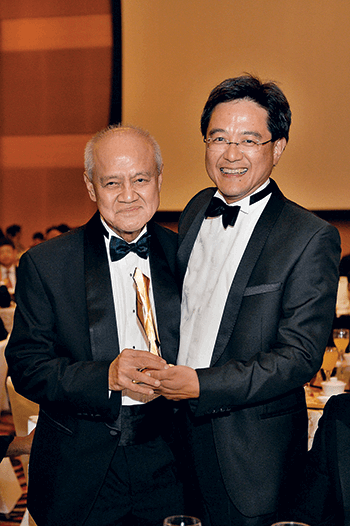
Who influenced you the most?
I would say my mother, father and my eldest brother. Why my eldest brother? Being the oldest, you would think he would be the first beneficiary of anything. He was a brilliant scholar — always No 1 in school. He was offered a job as a clerk when he was in Year 7, and after discussions with our father he said he would take the job to help out the family. So when I was studying in Australia, I always felt he should have been the one overseas, not me.
He taught me honesty and integrity. In fact, Mr Soon was not his only mahjong kaki who became my client. There was Mr Yap who had 10 acres of land and wanted to build light industrial factories — one of a kind back then. I also built homes on my father’s land.
This led to my political involvement — the influence of my family to serve society, especially after the 1969 [May 13 riots] incident. I became very active in politics and before you know it, in the general election of 1974, my chapter president said I would be well suited to stand for election. I wasn’t smart enough to refuse and that’s how I got stuck for 12 years [in politics]. During that time, I must say I did not pay enough attention to Sunrise.
Which is your most memorable project and why?
I would say OG Heights in Old Klang Road. It was after politics, in 1986. I had bought the land from a broker ... 10 acres for RM600,000. I couldn’t see anything there and I only decided to do something with it 13 years later.
I decided OG Heights shouldn’t compete against OUG Garden, which were mainly landed properties. It should be something different, especially because there was a recession then.
I went all out to market the project. We even rented a space at the airport, where we had just a model of the project. But it was enough to pique the curiosity of travellers. My intention was to capture the Singapore market. We received quite a good response.
I sometimes wondered if I had wasted 12 years being in politics. But perhaps not. If I could convince people to vote for me, perhaps I could convince them to buy my houses! If I am not mistaken, I was probably the first developer to put up a stall at a pasar malam in Section 17, Petaling Jaya! It wasn’t that bad — we sold one unit!
To make OG Heights different, I considered the surroundings and added facilities to the project. Back then, due to the financial crisis, thousands of projects were stalled. That was how bad the situation was in 1986.
How would you describe the experience then?
Horror! It was quite a big project and the challenges were new. My situation was like Sun Tzu’s The Art of War — if you push your enemy to a wall, he will fight you right to the end. That was my situation. Behind me was a wall, I had no choice but to go ahead and fight. I remember I had a team of 20 in the sales department. I took a map and assigned groups to certain streets. Their job was to explain the concept of OG Heights to people — 23 floors and three blocks — it was a big project. People hesitated in the beginning due to the recession, but it got better after that.
I focused a lot on marketing OG Heights. I may have been the first developer to organise open-air concerts when I was launching OG Heights. The site was maybe 1.7km from the main road. There was nothing there at the time, so I had to create something to attract people. At that time, local singer Elaine Kang was famous and we invited her to perform a concert there. The concert attracted almost 2,000 people on a Saturday night. I did that quite a few times. At least, they could see OG Heights coming up. I told the contractors to continue their work ... leave their lights on so people could see that while other projects had stalled, our project was still going on.
You were known as the ‘KL Condo King’ in the 1990s. You were the one who first started Mont’Kiara and look at it now. Tell us how it all began.
After OG Heights, I worked on Cascadium in Bangsar and Taman Seri Bahagia. It was around that time that a broker came to ask if I was interested in a 10-acre parcel in Segambut. I told her I was busy and to see other developers first. Six months later, she came back and insisted I must see the land. By then, Cascadium was successfully launched. The 120 units were sold within a week by word of mouth. I think it was wrongly priced — too cheap! (laughs). We also launched Taman Seri Bahagia [in Cheras]. The launch was at Sungei Wang Plaza. I hired a real estate agent and they reported that out of over 50 housing projects in Cheras, only 60 units per month were sold in total. How was I going to sell more than 500 units? Again, it was against the odds but I managed to beat them. We built shorter two-storey terraced houses with built-ups of about 1,200 sq ft.
So back to the broker, I finally went to see the land. We viewed it from Sri Hartamas. She pointed out the land to me. It was just 500m away from where we stood and it was a rubber estate. The undergrowth was so thick you couldn’t even walk through it. So I would have to buy the land without even walking on it. Back then, many would have found it too hilly and the valley a bit too deep. I did not want to build houses on that type of terrain, it would have been prohibitive. So I thought to just buy it first at a good price and think about it later. Within 18 months, the broker came back with more land for sale there. I bought over 100 acres and I took out a huge bank loan for it — up to 80%! They must have had good foresight, too, to take on such risks.
But yes, Mont’Kiara, I never imagined it would grow into what it is today. I feel overwhelmed and honoured to be the one who opened the doors to Mont’Kiara. More than 10 developers have jumped on the bandwagon to build there. It still has such an appeal to the international community.

Let’s talk about Mont’Kiara Sophia. You thought about retirement homes back then, when it was almost unheard of. Didn’t you think it was risky, especially in our culture? Is now the right time to develop such homes?
The first few projects in Mont’Kiara — Mont’Kiara Pines, Mont’Kiara Palma and Mont’Kiara Pelangi — did well. I built Mont’Kiara Sophia like a real retirement home — I even put in a space with artificial turf for lawn bowls. I forgot that in this weather, who would want to play that game? (laughs). The cost went up and it
became so luxurious and it had a low density, and I priced it very high compared with the rest. For the first time, the response was not very good. Only 5% to 10% were sold during the soft launch. I also had a restriction — only for people 50 years old and above. It was a problem, so I removed the condition but the response was still not so good.
This time, I went to Singapore to get buyers and the response was quite good and it gave me confidence to go ahead. And yes, I think now is the right time for retirement homes.
What are the lessons learnt and what is your motto in life?
Never do unto others what you wouldn’t want others to do unto you. My parents, they were very caring with their neighbours and I think it is something that has been embedded in us.
Even though I am the third son in my family, I act more like the eldest, really. When the company started to grow, my family looked up to me. My eldest brother was quite happy about this and even encouraged it. As for my employees, I treat them like friends. However, they must not forget integrity. In the development industry, we pay a lot of attention to our buyers to let them feel they have made the right choice in buying our properties.
If you had the opportunity to change the past, what would you change and why?
If I could change anything about OG Heights? I was very lucky with that project and to expect something more than that, especially at a time when there were so many stalled projects? I wouldn’t think so (smiles).
I probably would not have sold Sunrise at the age of 62! I thought perhaps it was time for me to retire when I sold Sunrise soon after getting it listed, just before the financial crisis in 1997. It was probably one of the biggest mistakes I have ever made. In other words, I don’t really know how to retire (laughs) and I would tell younger people to really think about it before retiring.
I think I could have contributed more instead of retiring — perhaps something more constructive and meaningful. After about four years of travelling and playing golf, I became very restless and decided to form Bukit Kiara Properties Sdn Bhd with my son, NK (Datuk NK Tong). TEPEA 2015
This article first appeared in City & Country, a pullout of The Edge Malaysia Weekly, on Dec 7, 2015. Subscribe here for your personal copy.
TOP PICKS BY EDGEPROP

Eco Botanic
Iskandar Puteri (Nusajaya), Johor

Andari Townvilla, Selayang Heights
Selayang, Selangor



